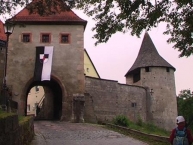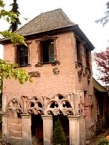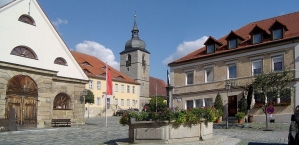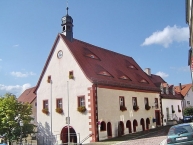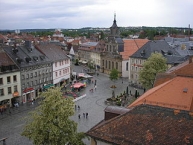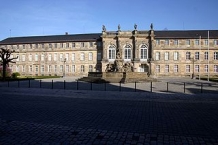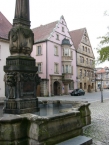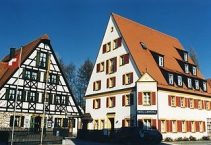Radtour Mainradweg und Mittelrhein
Reisebericht
Aktionen
![]()
Bitte warten - Kartendaten werden geladen
Erstellt am 06.12.2011,
zuletzt geändert von ThimbleU am 16.12.2013
Aktionen
Strecken-Merkmale
geplant
gefahren
Gesamtlänge in km
795
849
Gesamthöhenmeter Aufstieg
5.695
5.301
Durchschn. Steigung Aufstieg %
0,72
0,62
Gesamthöhenmeter Abstieg
6.072
5.264
Gesamtsattelstunden
-
48,5
Durchschnittsgeschwindigkeit in km/Std.
-
17,5
Informationen zu Rechten an den GPS-Track-Daten | |
|---|---|
Rechte-Inhaber | |
Rechte-Ausprägung / Lizenz | by-nc-sa: CREATIVE COMMONS Namensnennung, nicht kommerziell, Weitergabe unter gleichen Bedingungen |
Link zur Rechtebeschreibung | |
gpx-Datei hochgeladen | durch ThimbleU am 06.12.2011
|
Gesamtzahl Trackpoints
9.457
12.555
Trackpoint-Dichte per km
12
15
Endorte
Start
Creußen, Bayern, DE (433 m NHN)
Ziel
Köln, Nordrhein-Westfalen, DE (57 m NHN)
Informations-Quellen
Etappen
38 km
Creußen - Neudrossenfeld
104 km
Neudrossenfeld - Bamberg
94 km
Bamberg - Volkach
83 km
Volkach - Veitshöchheim
94 km
Veitshöchheim - Wertheim
98 km
Wertheim - Seligenstadt
98 km
Seligenstadt - Heidesheim
117 km
Heidesheim - Andernach
123 km
Andernach - Solingen
Fahrradfreundliche Unterkünfte, Sehenswertes und Infrastruktur
Name u. Anschrift
Breite / Länge
Tel.
Fax.
Mobile
Art d. Unterkunft
Radler-freund-lichkeit
Strecken-km
km zur Strecke
Höhe
1 km
0,0 km
435 m
Informationen zu Urheber-Rechten | |
|---|---|
Rechte-Inhaber | |
Rechte-Ausprägung / Lizenz | by-sa: CREATIVE COMMONS Namensnennung, Weitergabe unter gleichen Bedingungen |
Link zur Rechtebeschreibung | |
Bild übernommen aus | de.wikipedia.org/w/index.php?title=Datei:Stadttor_Creussen.JPG |
Bild hochgeladen | durch biroto-Redaktion am 05.01.2013
|
Informationen zu Urheber-Rechten | |
|---|---|
Rechte-Inhaber | |
Rechte-Ausprägung / Lizenz | by-sa: CREATIVE COMMONS Namensnennung, Weitergabe unter gleichen Bedingungen |
Link zur Rechtebeschreibung | |
Bild übernommen aus | de.wikipedia.org/w/index.php?title=Datei:Eremitage-Creußen.JPG |
Bild hochgeladen | durch biroto-Redaktion am 05.01.2013
|
Informationen zu Urheber-Rechten | |
|---|---|
Rechte-Inhaber | |
Rechte-Ausprägung / Lizenz | by-sa: CREATIVE COMMONS Namensnennung, Weitergabe unter gleichen Bedingungen |
Link zur Rechtebeschreibung | |
Bild übernommen aus | https://commons.wikimedia.org/wiki/File:Creußen,_Marktplatz,_26.09.08.jpg |
Bild hochgeladen | durch biroto-Redaktion am 09.07.2021
|
Informationen zu Urheber-Rechten | |
|---|---|
Rechte-Inhaber | |
Rechte-Ausprägung / Lizenz | by: CREATIVE COMMONS Namensnennung |
Link zur Rechtebeschreibung | |
Bild übernommen aus | https://commons.wikimedia.org/wiki/File:Creußen,_Altes_Rathaus,_Am_Alten_Rathaus_6_(01).jpg |
Bild hochgeladen | durch biroto-Redaktion am 09.07.2021
|
Creußen ist eine Stadt im oberfränkischen Landkreis Bayreuth.
Bauwerke
- Die ⊙Pfarrkirche St. Jakobus
am Heziloplatz erhielt nach der Zerstörung in den Hussitenkriegen und dem Wiederaufbau 1477 im Jahre 1700 ihre heutige Form und den größten Teil der barocken Innenausstattung. Der Kirchturm steht auf den Fundamenten des Bergfrieds der früheren Burg.
- Gegenüber befindet sich die ehemalige Lateinschule, die in ihrer Blütezeit weit über Creußen hinaus großes Ansehen genoss.
- Am ⊙Marktplatz steht das Pfarrhaus und davor das ehemalige Kommunbrauhaus, heute evangelisches Gemeindehaus.
- Die durchgehend erhaltene Stadtmauer wurde 1358 bis 1361 errichtet mit
- Die ⊙Habergasse war ursprünglich die Hauptstraße der Stadt und als Straßenmarkt angelegt. Dort wurden die Pferde der Handelsleute mit Hafer versorgt.
- Das ⊙Rathaus wurde 1360 erbaut und nach den Zerstörungen im Hussitenkrieg 1477 neu errichtet. Brot- und Fleischbänke an der Längsseite dienten als Verkaufsstände.
- ⊙Eremitenhäuschen. Neuhofer Str. 5, 95473 Creußen.
Es gilt als die einzige erhaltene bürgerliche Eremitage Deutschlands. Es wurde 1760 von dem Theologen Johann Theodor Künneth erbaut. - ⊙Krügemuseum, Am Rennsteig 8, 95473 Creußen. ☎ +49 9270 5805. Es wird das weltbekannte Creußener Steinzeug gezeigt. Geöffnet: Geöffnet ist Ostern bis Oktober, Mittwoch, Samstag und Sonntag 10.00 - 12.00 und 14.00 - 17.00, November bis Ostern Samstag 14.00 - 17.00, Sonntag 10.00 - 12.00 und 14.00 - 17.00 Uhr.
Informationen zu Urheber-Rechten | |
|---|---|
Rechte-Ausprägung / Lizenz | by-sa: CREATIVE COMMONS Namensnennung, Weitergabe unter gleichen Bedingungen |
Link zur Rechtebeschreibung | |
Text(e) übernommen von: |
|
übernommen / bearbeitet am | 05.01.2013 - 03.09.2021
|
übernommen / bearbeitet durch |
|
9 km
0,5 km
581 m
Die Rotmainquelle ist der Ursprung des Roten Mains , des linken und südlichen Quellflusses des Mains. Sie befindet sich im Lindenhardter Forst, zehn Kilometer südlich von Bayreuth
bei Hörlasreuth
auf einer Höhe von 581 m ü. NN. Obwohl der Rote Main um einige Kilometer länger als der Weiße Main
ist, gilt die in der Regel stärker schüttende Weißmainquelle
als die Mainquelle.
Die Rotmainquelle wurde 1907 in Stein gefasst, von dort fließt das Wasser über ein schmales Holzrohr ab. Das Quellgebiet liegt im Naturpark Fränkische Schweiz-Veldensteiner Forst. Es gehört geologisch zumBraunen Jura.
Der Fluss hat seinen Namen vom moorig-roten Untergrund und dem mitgeführten Sediment, das ihn rötlich erscheinen lässt. In der Nähe der Rotmainquelle befindet sich der Ursprung der Fichtenohe, des Oberlaufes der Pegnitz .
Informationen zu Urheber-Rechten | |
|---|---|
Rechte-Ausprägung / Lizenz | by-sa: CREATIVE COMMONS Namensnennung, Weitergabe unter gleichen Bedingungen |
Link zur Rechtebeschreibung | |
Text(e) übernommen von: |
Seite „Rotmainquelle“. In: Wikipedia, Die freie Enzyklopädie. Bearbeitungsstand: 25. April 2011, 18:39 UTC. URL: http://de.wikipedia.org/w/index.php?title=Rotmainquelle&oldid=88109271 (Abgerufen: 26. Mai 2013, 21:51 UTC) |
übernommen / bearbeitet am | 26.05.2013
|
übernommen / bearbeitet durch |
|
21 km
0,1 km
337 m
24 km
0,2 km
331 m
24 km
0,0 km
324 m
Informationen zu Urheber-Rechten | |
|---|---|
Rechte-Inhaber | |
Rechte-Ausprägung / Lizenz | by-sa: CREATIVE COMMONS Namensnennung, Weitergabe unter gleichen Bedingungen |
Link zur Rechtebeschreibung | |
Bild übernommen aus | |
Bild hochgeladen | durch biroto-Redaktion am 06.01.2013
|
Informationen zu Urheber-Rechten | |
|---|---|
Rechte-Inhaber | |
Rechte-Ausprägung / Lizenz | by-sa: CREATIVE COMMONS Namensnennung, Weitergabe unter gleichen Bedingungen |
Link zur Rechtebeschreibung | |
Bild übernommen aus | |
Bild hochgeladen | durch biroto-Redaktion am 05.01.2013
|
Informationen zu Urheber-Rechten | |
|---|---|
Rechte-Inhaber | |
Rechte-Ausprägung / Lizenz | by-sa: CREATIVE COMMONS Namensnennung, Weitergabe unter gleichen Bedingungen |
Link zur Rechtebeschreibung | |
Bild übernommen aus | |
Bild hochgeladen | durch biroto-Redaktion am 06.01.2013
|
Informationen zu Urheber-Rechten | |
|---|---|
Rechte-Inhaber | |
Rechte-Ausprägung / Lizenz | by-sa: CREATIVE COMMONS Namensnennung, Weitergabe unter gleichen Bedingungen |
Link zur Rechtebeschreibung | |
Bild übernommen aus | commons.wikimedia.org/wiki/File:Bayeruth_Badstrasse_37,_Lohmühle,_12.03.95.jpg |
Bild hochgeladen | durch biroto-Redaktion am 06.01.2013
|
Am bayerischen Roten Main ![]() liegt die Stadt Bayreuth, weltberühmt für ihre Richard-Wagner-Festspiele
liegt die Stadt Bayreuth, weltberühmt für ihre Richard-Wagner-Festspiele ![]() und das zum Weltkulturerbe erkorene markgräfliche Opernhaus. 2016 richtet sie die Landesgartenschau in Bayern aus.
und das zum Weltkulturerbe erkorene markgräfliche Opernhaus. 2016 richtet sie die Landesgartenschau in Bayern aus.
Hintergrund
Die erste urkundliche Erwähnung datiert aus dem Jahr 1194 als Baierrute. Der Name geht vermutlich auf die Baiern und eine Rodung, also hier rute , zurück. Knapp 40 Jahre später, im Jahr 1231, wird Bayreuth erstmals als Stadt bezeichnet. Später (1361) erhielt die Stadt das Münzrecht und im Zuge der Reformation wurde Bayreuth 1528 evangelisch.
Gegründet von den Andechs-Meraniern ging die Stadt 1260 in den Besitz der Burggrafen von Nürnberg (Hohenzollern) über. Ab 1603 verlegten die Markgrafen von Brandenburg-Bayreuth ihre Residenz von der Kulmbacher Plassenburg nach Bayreuth. Damit begann eine Blütezeit der Stadt, die ihren Höhepunkt im Wirken der Markgräfin Wilhelmine, einer Schwester Friedrichs II. von Preußen, hatte. Sie machte aus dem verschlafenen Markgrafenhof eine Residenzstadt, die einem Vergleich mit den großen Residenzen in Berlin und Wien standhalten konnte. Zu dieser Zeit bekam Bayreuth sein barockes Stadtbild, das bis heute sichtbar ist. Unter anderem wurden damals die Markgräfliche Oper (1748), die Eremitage mit neuem Schloss und Sonnentempel (1753) und das Neue Schloss (1754) gebaut bzw. erweitert.
In der ersten Hälfte des 17. Jahrhunderts wüteten sowohl die Pest als auch zwei große Brände in der Stadt, die in der zweiten Hälfte noch durch den Dreißigjährigen Krieg in Mitleidenschaft gezogen wurde.
Nach Aussterben der Markgrafen fiel Bayreuth erst an die Ansbacher Linie und gegen Ende des 18. Jahrhunderts an die preußischen Verwandten. In Folge der napoleonischen Eroberung 1806 gehörte Bayreuth kurzfristig zu Frankreich. Die Franzosen übergaben die Stadt 1810 gegen eine Zahlung von 15 Millionen Francs an Bayern.
1872 erfolgte die Grundsteinlegung für das bis heute wohl bekannteste Markenzeichen der Stadt, das von Richard Wagner gewünschte und vom Architekten Otto Brückwald geplante Festspielhaus, das 1876 feierlich eröffnet werden konnte.
Im Dritten Reich sollte Bayreuth Hitlers Plänen zufolge nach dem Endsieg zur Kulturhauptstadt des Reichs umgestaltet werden. Nach dem Zweiten Weltkrieg fanden in der teilweise zerstörten Stadt 1951 erstmals wieder Festspiele statt. Durch Beschluss des bayerischen Landtages wurde Bayreuth Universitätsstadt. Die Universität nahm 1975 ihren Lehrbetrieb auf.
Sehenswürdigkeiten
Stadtführungen
Die Touristen Information bietet für Individualreisende und auch für Gruppenreisende Stadtführungen zu verschiedenen Themen an: Z.B. Stadtrundgang "Historisches Bayreuth" ; Auf den Spuren Jean Pauls; Auf den Spuren Richard Wagners; Jüdisches Leben in Bayreuth.
Kirchen
Im direkten Zentrum der Stadt befinden sich drei Kirchen.
- Das wäre zum einen die ⊙Spitalkirche. Die klassizistische Spitalkirche wurde 1748 nach Plänen des Hofbaumeisters Joseph Saint-Pierre erbaut (aus dessen Feder das Markgräfliche Opernhaus, die Schlosskirche und das Neue Schloss stammen) befindet sich am westlichen Ende des Marktplatzes in der Maxstraße und wurde in den letzten Jahren renoviert. Die Kirche beinhaltet u.a. Emporenbilder von Elias Brendel, Stuckverzierungen von Rudolf Albini und einen Kanzelaltar mit vier korinthischen Säulen vom Bildhauer Johann Räntz. 1828 kam das Altarbild mit der Grablegung Jesu hinzu.
Die ⊙Schlosskirche ist durch einen einzelnen hohen Turm gekennzeichnet, der hoch hinausragt und von vielen Stellen aus zu sehen ist. In ihr befinden sich u.a. die Gebeine der Markgräfin Wilhelmine. Der Turmaufgang ist so breit, dass man in früheren Zeiten mit einer Kutsche hinauffahren konnte.
Die gotische ⊙Stadtkirche war von Mitte 2006 - 1. Advent 2014 gesperrt, weil man bei Renovierungsarbeiten mittelalterlichen „Pfusch am Bau“ festgestellt hat; Teile der Kirche hatten sich abgesenkt und waren partiell einsturzgefährdet. Am 1. Advent 2014 wurde sie wieder eingeweiht. Eine Besonderheit in der "neuen" Stadtkirche ist der nun mögliche Blick in die Grablege der Bayreuther Markgrafen.
Weitere Kirchen sind:
- Die evang.-luth. Sophienkirche zur hl. Dreifaltigkeit, genannt ⊙Ordenskirche, in St. Georgen ist die erste Kirche, die nach der Reformation in Bayreuth gebaut wurde. Gestiftet von Erbprinz Georg Wilhelm, nach Plänen von Gottfried von Gedeler in den Jahren 1705 bis 1711 erbaut, mit einem Kanzelaltar von Elias Räntz.
- ⊙Stiftskirche, St. Georgen 56, wurde 1735 von Georg Christoph von Gravensreuth gestiftet und von Hofbauinspektor Johann Georg Weiss von 1741 bis 1744 erbaut. Die Kirche ist nicht alleinstehend wie andere Kirchen, sondern ist in die Häuserfront der Straße integriert, so läuft man schnell daran vorbei.
- Die ⊙ katholische St.-Hedwigs-Kirche wurde 1960 vom bekannten Architekten Emil Stefann errichtet. Sie gilt als eines seiner schönsten Werke. Die Kirche beeindruckt durch ihr ungewöhnliches Mauerwerk, das ganz aus unverputzten Jurakalksteinen besteht. Zusätzlich findet man an den beiden Eingangstüren Szenen aus dem Alten und Neuen Testament.
Burgen, Schlösser und Paläste
- Das ⊙Neue Schloss wurde in den Jahren 1753 bis 58 im Auftrag des Markgrafen Friedrich von Brandenburg-Bayreuth als neue Stadtresidenz erbaut, nachdem das Alte Schloss durch ein Feuer großteils zerstört wurde.
- Das ⊙Altes Schloss mit der Schlosskirche Unsere Liebe Frau, wurde nach teilweise Zerstörung im Zweiten Weltkrieg in den 1950er Jahren wieder aufgebaut. Es befindet sich in der Fußgängerzone. Ein Teil des Gebäudes wird heute als Finanzamt genutzt.
- Das ⊙Schloss Birken ist eine barocke Schlossanlage im Stadtteil Birken. Nach seinem heutigen Besitzer wird das Schloss auch “Rothenbücher-Villa“ genannt.
- Das ⊙Schloss Colmdorf oder auch Schloss Carolinenruhe genannt, liegt im Stadtteil Colmdorf (Königsallee, B 22 Richtung Weiden). Das Schloss ist zu einem großen Garten hin ausgerichtet und wurde durch Notsicherungsmaßnahmen vorerst vom Verfall gerettet.
- Das ⊙Alte Schloss Eremitage ist nach umfangreichen Renovierungsarbeiten wieder zugänglich. Neben dem Spiegelscherbenkabinett ist besonders die innere Grotte mit Wasserspielen, die bei jeder Führung zur kreischenden Freude der Besucher vorgeführt werden, sehenswert.
- Das ⊙Neue Schloss Eremitage ist dem Schloss Sanssouci von Markgräfin Wilhelmine. Lieblingsschwester Friedrichs II. des Großen nachempfunden. Allerdings besteht es aus drei einzelnen Gebäudeteilen, die sich halbmondförmig um die Obere Grotte gruppieren. Das Schloss wurde im Zweiten Weltkrieg schwer beschädigt, so dass nur noch der Sonnentempel in der Mitte der Anlage, die originale Innenausstattung zeigt. Außen jedoch zeigt sich das Schloss noch in seiner ganzen Pracht mit den mit Glassteinen verzierten Wänden und der vergoldeten Quadriga.
- Das ⊙Ordensschloss im Stadtteil St. Georgen, wird heutzutage von der Bayreuther JVA genutzt.
- Weitere Schlösser in Bayreuth, die allerdings nicht öffentlich zugänglich sind: ⊙Schloss Monplaisier in der Eremitage, ⊙Schloss Laineck, ⊙Schloss St. Johannis, Schloss Meyernberg
Bauwerke
- ⊙Markgräfliches Opernhaus gilt als eines der schönsten Barocktheater Europas und wurde am 30. Juni 2012 als
 UNESCO-Weltkulturerbe anerkannt. Im Auftrag der Markgräfin Wilhelmine plante Hofbaumeister Joseph Saint-Pierre die Fassade; die Gestaltung des Innenraum erfolgte durch Giuseppe und Carlo Galli Bibiena.
UNESCO-Weltkulturerbe anerkannt. Im Auftrag der Markgräfin Wilhelmine plante Hofbaumeister Joseph Saint-Pierre die Fassade; die Gestaltung des Innenraum erfolgte durch Giuseppe und Carlo Galli Bibiena.
Das Opernhaus ist seit September 2012 bis voraussichtlich April 2018 wegen Renovierungsarbeiten geschlossen. Im vorderen Teil des Gebäudes mit dem Eingang und der Museumskasse gibt es auf zwei Stockwerken seit Mai 2013 eine kleine Ausstellung zur Geschichte des Gebäudes und den laufenden Renovierungsarbeiten. - ⊙ Das Bayreuther Festspielhaus ist der Ort der Bayreuther Richard-Wagner-Festspiele auf dem Grünen Hügel. Es ist einzigartig in seiner Architektur und Akustik und zählt zu den größten Opernbühnen der Welt. 1872 ließ Richard Wagner das Gebäude erbauen, und bereits 1876 wurden die ersten Festspiele veranstaltet. Führungen finden täglich um 10.00 und 14.00 außer montags statt. Allerdings gibt es keine Besichtigungsmöglichkeit in der Proben- und Festspielzeit (d.h. jeweils von etwa Mitte Mai bis Ende August).
Museen
- ⊙Richard-Wagner-Museum, Richard-Wagner-Straße 48, 95444 Bayreuth. ☎ +49 921 757280. Das Museum verteilt sich auf drei Gebäude. Da ist zum einen Richard Wagners Wohnhaus "Wahnfried", in dem das Leben, das Werk und das Schaffen von Richard Wagner gezeigt wird. Im Siegried-Wagner-Haus wird die Ideologie Wagners, die Beziehung der Familie Wagner zu Adolf Hitler und die Verbindung der Stadt Bayreuth zur NS-Diktatur beleuchtet. Das Innere des Gebäudes ist in seiner originalen Ausstattung der 1930er Jahre erhalten. Es gibt einen modernen Ergänzungsbau, der sich komplett mit den Bayreuther Festspielen beschäftigt. Hier sind Bühnenbildmodelle und Kostüme von Aufführungen ausgestellt. Geöffnet: Dienstag bis Sonntag von 10:00 bis 18:00 Uhr, im Juli und August zusätzlich auch Montag von 10:00 bis 18:00 Uhr. Preis: Erwachsene 8,00 €, Kinder und Jugendliche bis 18 Jahre haben freien Eintritt.
- ⊙Franz-Liszt-Museum, Wahnfriedstraße 9, 95444 Bayreuth. ☎ +49 921 5166488. Museum zu Werk und Leben des Schwiegervaters von Richard Wagner Geöffnet: Dienstag bis Sonntag von 10:00 bis 12:00 Uhr und von 14:00 bis 17:00 Uhr, im Juli und August täglich von 10:00 bis 17:00 Uhr. Preis: Erwachsene 2,00 €, ermäßigt 1,00 € €.
- ⊙Jean-Paul-Museum, Wahnfriedstraße 1, 95444 Bayreuth. ☎ +49 921 5071444. Geöffnet: Dienstag bis Sonntag von 10:00 bis 12:00 Uhr und von 14:00 bis 17:00 Uhr, im Juli und August täglich von 10:00 bis 17:00 Uhr. Preis: Erwachsene 2,00 €, ermäßigt 1,00 €.
Es gibt eine Kombi-Karte für das Richard-Wagner-Museum, das Franz-Liszt-Museum und das Jean-Paul-Museum für 11,00 €
- ⊙Markgräfliche Prunkräume/Bayreuther Fayencen, Ludwigstraße 21, 95444 Bayreuth. ☎ +49 921 7596921. Die Sammlung zeigt Keramik der Bayreuther Manufaktur. Geöffnet: von April bis September täglich von 09:00 bis 18:00 Uhr, von Oktober bis März: Dienstag bis Sonntag von 10:00 bis 16:00 Uhr.
- ⊙Museum "Das Bayreuth der Markgräfin Wilhelmine", Ludwigstraße 21, 95444 Bayreuth. ☎ +49 921 7596921. Es wird die Chronologie der Markgrafenzeit sowie die Geschichte der Hohenzollern in Franken und in Bayreuth illustriert. Es werden Zeichnungen, Miniaturen und Bücher gezeigt. Geöffnet: von April bis September täglich von 09:00 bis 18:00 Uhr, von Oktober bis März: Dienstag bis Sonntag von 10:00 bis 16:00 Uhr.
- ⊙Staatsgalerie im Neuen Schloss, Ludwigstraße 21, 95444 Bayreuth. ☎ +49 921 759690. Ausgestellt sind Gemälde niederländischer und deutscher Maler aus dem 17. und 18. Jahrhundert Geöffnet: von April bis September täglich von 09:00 bis 18:00 Uhr, von Oktober bis März: Dienstag bis Sonntag von 10:00 bis 16:00 Uhr.
Für alle drei Museumsteile im Neuen Schloss löst man eine Eintrittskarte. Die Preise sind für Erwachsene 5,00 € und ermäßigt 4,00 €.
- ⊙Historisches Museum, Kirchplatz 4, 95444 Bayreuth. Das Museum präsentiert die Stadtgeschichte und Entwicklung von Bayreuth und des damaligen Fürstentums. Es gibt unter anderem ein Stadtmodell, welches Bayreuth im Jahr 1763 zeigt. Geöffnet: Dienstag bis Sonntag von 10:00 bis 17:00 Uhr, im Juli und August zusätzlich auch Montag von 10:00 bis 17:00 Uhr. Preis: Erwachsene 2,00 €, ermäßigt 1,00 €.
- ⊙Urwelt-Museum Oberfranken, Kanzleistraße 1, 95444 Bayreuth. ☎ +49 921 511211. Gezeigt werden Fossilien, Kristalle und Gesteine aus der Erdgeschichte. Geöffnet: Di bis So von 10 - 17 Uhr, während der Sommerferien und der Festspielzeit auch am Mo. Preis: Erwachsene 3,50 €, ermäßigt 2,50 €, Familienkarte 10,00 €. (
- ⊙Archäologisches Museum, Ludwigstraße 25b, 95444 Bayreuth. ☎ +49 921 65307. Es werden Funde aus der Region von der Altsteinzeit bis zum Mittelalter gezeigt. Darunter sind Steinäxte aus der Jungsteinzeit und Gegenstände aus der Bronzezeit. An einem Nachbau eines Steinbohrers und eines Getreidemahlsteins aus der Jungsteinzeit kann man selbst erleben, wie gearbeitet wurde. Geöffnet: von Mai bis Oktober jeweils Samstag von 10:00 bis 15:00 Uhr und jeden ersten Sonntag im Monat von 10:00 bis 12:00 Uhr, weitere Termine nach Vereinbarung. Preis: Erwachsene 1,00 €, ermäßigt 0,50 €.
- ⊙Kunstmuseum, Maximilianstraße 33, 95444 Bayreuth. ☎ +49 921 7645310. Der Schwerpunkt der Ausstellungen liegt auf Kunst aus dem 20. Jahrhundert. Im Gebäude befindet sich ebenfalls das Kleine Plakatmuseum mit Werbeplakaten aus dem Bereich Theater, Kino und Musik und die Tabakhistorische Sammlung der British American Tobacco mit Exponaten wie Pfeifen, Etuis für Zigaretten und Kautabak und verschiedenen Graphiken. Geöffnet: Dienstag bis Sonntag von 10:00 bis 17:00 Uhr, im Juli und August zusätzlich auch Montag von 10:00 bis 17:00 Uhr. Preis: Erwachsene 2,00 €, ermäßigt 1,00 €.
- ⊙Iwalewahaus, Wölfelstraße 2, 95444 Bayreuth. ☎ +49 921 554500. Das Iwalewahaus zeigt zeitgenössische Kunst aus Afrika. Geöffnet: Bei laufenden Ausstellungen von Di bis So von 13 - 17 Uhr. Wenn keine Ausstellungen sind, dann ist das Haus geschlossen. Preis: Erwachsene 5,00 €, ermäßigt 3,00 €.
- ⊙Wilhelm-Leuschner-Gedenkstätte, Moritzhöfen 25, 95447 Bayreuth. ☎ +49 921 1507200. Im Geburtshaus von Wilhelm Leuschner wurde die Mahn- und Gedenkstätte eingerichtet. DIe Ausstellung zeigt seinen Lebensweg mit den Station Bayreuth (Kindheit, Jugend, Ausbildung), Darmstadt (Arbeit, Eintritt in Gewerkschaft und Eintritt in die SPD, Soldatenzeit im Ersten Weltkrieg) und Berlin (Widerstand gegen die NS-Diktatur und Hinrichtung). Geöffnet: Dienstag bis Freitag von 10:00 bis 14:00 Uhr, Samstag und Sonntag von 13:00 bis 16:00 Uhr. Preis: Eintritt ist frei.
- ⊙Maisel's Brauereimuseum, Kulmbacher Straße 40, 95444 Bayreuth. ☎ +49 921 401234. Der Besuch des Museums ist nur mit einer Führung möglich, die täglich um 14:00 Uhr stattfindet. Gruppen ab 12 Personen können mit Absprache auch einen anderen Termin buchen. Der Rundgang dauert ungefähr 90 Minuten. Abschließend gibt es in der "Alten Abfüllerei" ein Glas Maisel's Weisse oder ein alkoholfreies Getränk zur Verkostung. Preis: Erwachsene 5,00 €, Jugendliche 3,00 €.
- ⊙Bayreuther Katakomben, Kulmbacher Straße 60, 95445 Bayreuth. ☎ +49 921 401234. Die Führung durch die Katakomben dauert ungefähr 60 Minuten. Der Besucher erfährt dabei Einzelheiten aus der Brauereihistorie, aber auch wie die Katakomben anderweitig genutzt worden sind. Die Temperatur in den Katakomben beträgt 10 Grad, passende Kleidung daher nicht vergessen. Nach der Führung gibt es im "Bräustüberl" ein frisch gezapftes AKTIEN Zwick'l Kellerbier. Geöffnet: Führungen für Einzelpersonen finden Montag bis Sonntag um 16:00 Uhr statt. Weitere Termine können für Gruppen ab 12 Personen nach Absprache gebucht werden. Preis: Erwachsene 5,00 €, Jugendliche 3,00 €.
- ⊙Deutsches Freimaurermuseum, Im Hofgarten 1, 95444 Bayreuth. ☎ +49 921 69824. Das Museum stellt Freimaurerbekleidung, Medaillen, Logenabzeichen, Kupferstiche, Bilder und Pokale im Zusammenhang mit Freimaurerlogen aus. Geöffnet: Dienstag bis Freitag von 10:00 bis 12:00 Uhr und von 14:00 bis 16:00 Uhr, Samstag von 10:00 bis 12:00 Uhr, an Feiertagen geschlossen.
- ⊙Walküre Porzellanmuseum, Gravenreutherstraße 5, 95445 Bayreuth. ☎ +49 921 78930760. Das hauseigene Museum der Firma Walküre ist aufgeteilt in vier Bereiche: das Jahr 1899, das Jahr 1920, das Jahr 1950 und das Jahr 1999. Man macht eine kleine Zeitreise durch 100 Jahre Porzellangeschichte. Geöffnet: Montag bis Freitag von 10:00 bis 16:00 Uhr, Samstag von 10:00 bis 13:00 Uhr. Preis: Erwachsene 2,00 €, ermäßigt 1,50 €.
- ⊙Wo Sarazen Art, Brandenburger Straße 36, 95448 Bayreuth. ☎ +49 921 20616. In ausgedehnten Gängen, die für die Lagerung von Bier in den Sandstein gehauen wurden, hat der Künstler Wo Sarazen Skulpturen und Objekte in seinem "Kellerkunstmuseum" aufgestellt. Geöffnet: nach Vereinbarung; während der Festspiele täglich von 11:00 bis 16:00 Uhr. Preis: Eintritt ist frei.
- ⊙Deutsches Schreibmaschinenmuseum, Bernecker Straße 11, 95448 Bayreuth. ☎ +49 921 23445. Alles rund um das Thema Schreibmaschine. Das älteste Gerät stammt aus dem Jahr 1888. Geöffnet: Termine zur Besichtigung nur nach vorheriger Absprache.
- ⊙Schulmuseum, Wittelsbacherring 9, 95444 Bayreuth. ☎ +49 921 759850. Das Richard-Wagner-Gymnasium zeigt seine Entwicklung von der privaten Höheren Töchterschule des Jahres 1867 zu einem modern geführten Gymnasium und auf welche Weise Ereignisse (Erster Weltkrieg, NS-Diktatur, Aufbau nach 1945) Einfluss auf das Schulleben genommen haben. Geöffnet: nur nach vorheriger Anmeldung. Preis: Eintritt ist frei.
- ⊙Transport-Museum Wedlich, Ludwig-Thoma-Straße 36, 95447 Bayreuth. ☎ +49 921 759060. Das Transport-Museum zeigt alte Arbeitsgeräte aus Büro und Lager, wie zum Beispiel Waagen, Sackkarren, Kisten, Schreibmaschinen und Telexgeräte. Geöffnet: Besichtigung nach Vereinbarung.
Küche
Die fränkische, reichliche und deftige Küche ist in Bayreuth und Umgebung omnipräsent. Köstliche Braten, Klöße, Kraut, knuspriges Schäuferla und dazu ein frisches Bier. All das gibt es vielerorts günstig, sprich ein Hauptgericht für unter 8 € und um die 2 € der halbe Liter Bier (man spricht lokal auch vom Seidla) in der nahen Fränkischen Schweiz und jeder Besucher sollte einmal die gute fränkische Küche erlebt haben. Aber auch wer nicht unbedingt auf deftige, herzhafte Fleischgerichte steht, findet in Bayreuth abwechslungsreiche und günstige Lokalitäten.
Informationen zu Urheber-Rechten | |
|---|---|
Rechte-Ausprägung / Lizenz | by-sa: CREATIVE COMMONS Namensnennung, Weitergabe unter gleichen Bedingungen |
Link zur Rechtebeschreibung | |
Text(e) übernommen von: |
Wikivoyage-Bearbeiter, 'Bayreuth', Wikivoyage, Freie Reiseinformationen rund um die Welt, 9. Januar 2018, 10:45 UTC, <https://de.wikivoyage.org/w/index.php?title=Bayreuth&oldid=1071049> [abgerufen am 29. April 2018] |
übernommen / bearbeitet am | 29.04.2018
|
übernommen / bearbeitet durch |
|
![]()










